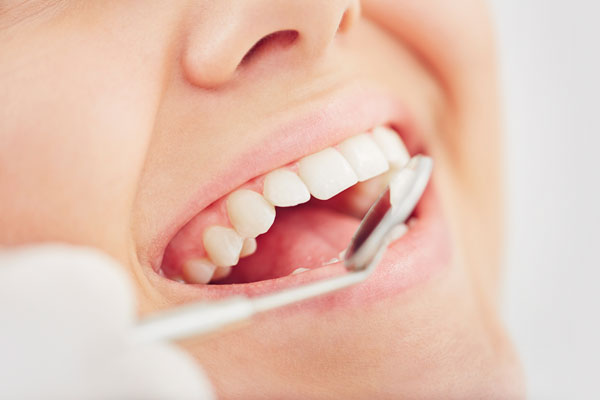
The Importance of Good Oral Health
Oral Health and Overall Health: The Mouth-Body Connection
October is National Dental Hygiene Month, an effort to celebrate the valuable services dental hygienists provide and raise awareness on the importance of good oral health. To understand what good oral health practices are, it is important to understand what oral health is. The World Health Organization (WHO) defines oral health as “a state of being free from chronic mouth and facial pain, oral and throat cancer, oral infection and sores, periodontal (gum) disease, tooth decay, tooth loss, and other diseases and disorders that limit an individual’s capacity in biting, chewing, smiling, speaking, and psychosocial wellbeing.” Oral health is intimately linked to the overall health of one’s body and impacts one’s health longevity. Indeed, recent studies suggest that one’s mouth serves as a window into the state of the overall health of one’s body and can be used to detect the early signs and symptoms of diseases affecting the whole body.
The Mouth-Body Connection
The mouth-body connection suggests that what happens in one’s mouth impacts the rest of one’s body, and vice versa. The mouth is teeming with mostly harmless bacteria. Under normal circumstances, one’s natural bodily defense mechanisms, combined with good oral health care practices, fight off most potentially harmful bacteria. One’s body is less capable of fighting off harmful bacteria with poor oral health practices, leading to oral infections like tooth decay and gum disease. Specifically, harmful elements can enter other parts of the body when the seal surrounding the teeth and gums weakens. When this seal is weakened and harmful bacteria slips through, all other bodily systems are susceptible to potential infection, injury, or inflammation by way of one’s bloodstream.
Conditions Caused or Exacerbated by Oral Infections & Directly Linked to Poor Oral Health:
- Dental Caries (Tooth Decay)
- Periodontal (Gum) Disease
- Oral Symptoms of HIV Infections
- Diabetes
- Alzheimer’s & Dementia
- Low Birthweight & Premature Births
- Cardiovascular Disease Including Stroke, Heart Attack, and Infective Endocarditis
- Weight Gain
- Rheumatoid Arthritis
- Osteoporosis
- Cancer: Breast, Prostate, Oral
- Bacterial Pneumonia
Oral Health Disparities in Georgia
Oral diseases are a major global public health issue that impacts most children and adults. However, the prevalence of negative oral health outcomes in lower socioeconomic areas and among certain races in Georgia are outsized and are very telling.
- Children from low socioeconomic status (SES) households are 50% more likely to experience tooth decay than their high SES peers. Furthermore, untreated tooth decay is twice as high in low SES households.
- Hispanic children have a 64% greater likelihood of experiencing tooth decay when compared to non-Hispanic children.
- Non-Hispanic blacks and Hispanic high school students visit an Emergency Room (ER) or urgent care center for dental or oral complications at a rate of 10.3% each, which is more than twice the rate at which their non-Hispanic white peers visit an ER for the same issues (4.9%).
- Adults earning $50,000 or more annually are more than twice as likely to visit a dentist than adults in their same age cohort who earn less than $15,000 a year (85% vs. 39%).
- Only 8.7% of all dental care providers in Georgia accept Medicaid or Peach Care for Kids; this is particularly problematic since 1.5 million (58%) of children in Georgia qualify for public dental benefits in these programs. This population also travel 10 or more miles on average than children with private dental insurance.
Prevention
Many oral diseases are avertible with proper oral health habits. Oral health practices that help reduce the likelihood of oral diseases include:
- Consuming a well-balanced diet low in free sugars and high in fruits and vegetables. Sugar-rich foods positively contributes to premature tooth loss and other noncommunicable diseases, while fruits and vegetables may serve as a protective force against oral cancer.
- Avoiding smoking and alcohol consumption to diminish the chance of oral cancers, gum disease and tooth decay.
- Brushing one’s teeth twice a day for two minutes with fluoride-rich toothpaste. Scraping one’s tongue with the back of a toothbrush will also remove potentially harmful bacteria. Oral health begins with clean teeth; thus, by keeping one’s teeth clean with proper brushing technique, one can reduce the likelihood of cavities and periodontal disease.
- Flossing daily will help one reach and clean areas rich in bacteria between the teeth, which are impossible to reach with a toothbrush.
- The use of mouthwash with fluoride will also help to remove stubborn food particles leftover after blushing and flossing, reduces bad breath, prevents plaque build-up, and prevents cavities from forming and strengthens enamel.
- Regular dental cleanings and check-ups will also help to prevent periodontal disease and other oral health conditions. Early detection and treatment of oral health problems will ultimately help ensure greater health outcomes.
Two things are clear: the body and the mouth are closely intertwined in a delicate balance wherein the state of one’s oral health impacts one’s bodily health, and vice versa. Also, practicing all these oral health techniques actively will help improve one’s oral and overall health longevity.
References
Ask the Dentist. What exactly is the mouth-body connection? Published 2019. Accessed 17 October, 2019.
Georgia Department of Public Health. The burden of oral health in Georgia. Published 2014. Accessed 15 October, 201.
Georgia Public Policy Foundation. Georgia must correct dental care disparities. Published 2016. Accessed 16 October, 2019.
Mayo Clinic. Oral health: A window to your overall health. Published 2019. Accessed 15 October, 2019.
Mayo Clinic. Oral health: Brush up on dental care basics. Published 2019. Accessed 16 October, 2019.
WebMD. Oral health: The mouth-body connection. Published 2012. Accessed 16 October, 2019.
World Health Organization. Oral health. Published 2018. Accessed 15 October, 2019.


